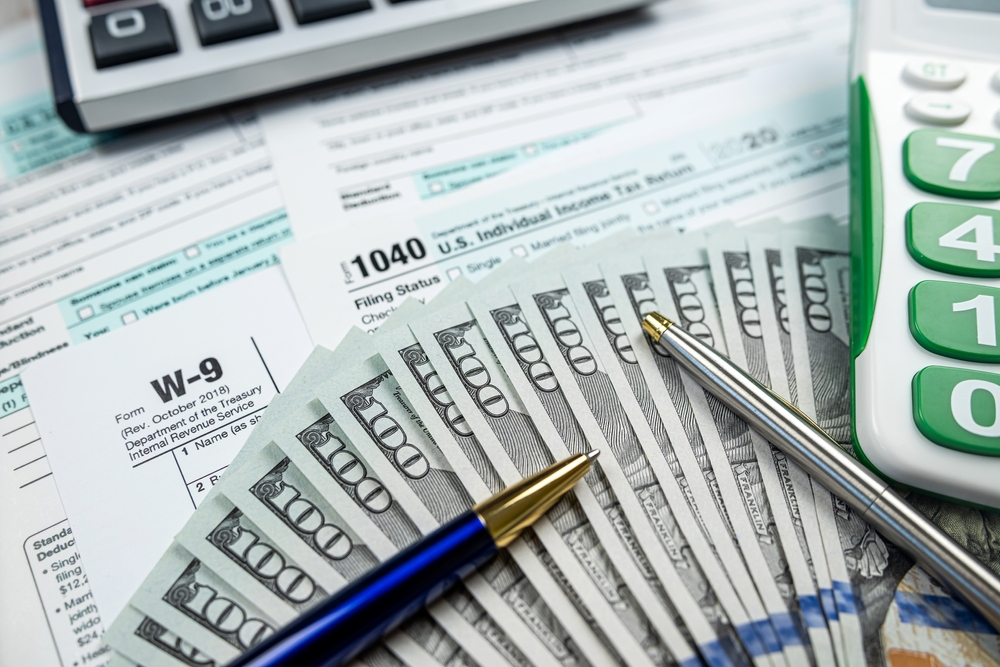Moving to a new state will inevitably lead to major changes in your life. You have to adjust to a new home and possibly a different climate and a different time zone. A new job or school will also require you to adapt. However, one change most people don’t consider is how it will affect your taxes. Each state has its own various taxes on sales, income, and property, among others. Adjusting to a higher tax on your paycheck is already, well, taxing. If you’ve already filed your taxes for the year at your old home, there are more hurdles to contend with.
Effects on Income Tax
In 2015, the U.S. Supreme Court ruled that two different states can’t tax the same income. While this elevates the headache of potentially being double-taxed, you’re not entirely off the hook either. If you’ve earned income in one state and moved to another, you’re required to file a tax return in both.
What’s the definition of “the same income”? That’s a bit trickier. Let’s say you’ve been relocated from Illinois to Ohio for your job. While you’re still working for the same employer, Ohio can’t tax you for the work you did when you resided in Illinois. However, you’re still required to pay income tax for the time you did work in Illinois, even if it was at the beginning of the year.
None of this applies if you don’t receive any income or change jobs between states. You also don’t have to file taxes for work done remotely but out of state. If for some reason you’ve lived in multiple states over the year, you still have to file a tax return in each. Yes, some people may file three or more tax returns in a single year.
Filing a Part-Year Tax Return

You must fill out a part-year tax return rather than the typical form to prevent being fully taxed in each state by mistake. These require more calculation than the usual tax return, but it ultimately benefits you.
- Figure out which states you need to file a tax return in. Tax liability in this scenario is based on the percentage of work done in each state.
- Calculate your yearly earnings and your earnings in each state. It will be easier if you date each paycheck and when it was received — and in which location.
- File the appropriate tax returns. You can visit each state’s Department of Revenue or equivalent agency for the proper forms.
These steps do sound complicated, but the process is fairly intuitive. It’s also not too dissimilar from the regular tax return process. If you’re having difficulties, consider hiring a tax specialist or consultant or using an online tax calculator.
Effects on Property Tax
When you close a house sale, you put approximately a year’s worth of property tax into escrow. The mortgage lender uses this to pay the taxes, as that’s typically their responsibility. They may pay it directly from the money in escrow or collect additional monthly payments from you. Regardless of the method, the down payment is a sort of insurance for both parties. It assures the lender that you have the funds to pay for the house. The down payment protects you from them selling the home without your knowledge.
What makes the biggest difference is if the house has been previously occupied. If you’re moving into a preowned home — one that had occupants before you — you’ll only have to pay for the time you’ve lived there. Property taxes are typically filed in March and September. If you move in July, you’ll have to reimburse the seller for part of their September tax. From there, you’ll pay as usual.
For new construction, however, things get a bit more complicated. You’ll still need to pay a year’s taxes in advance, but it may be lower than expected. This is because the first year’s tax is based on unimproved land. “Unimproved” refers to land that has no features to raise its value but is still livable. The state needs to send an agent to evaluate the house and its value. This will inevitably increase the amount due for your subsequent taxes. Property appreciation over the years will also have an impact.
Calculating Property Tax

Usually, property tax is done for you, unlike your income taxes. You simply have to pay what’s due at each interval. However, if you’re curious about what your property taxes will be beforehand, there are ways to calculate them.
- Determine your property’s value. If you’re buying a preowned home, this is simple: It’s the market price for the house. For new constructions, you may have to wait for an evaluation.
- Find your area’s mill levy. Tax rates vary depending on how many city and school districts are within a particular county. These features are levied against the properties within its borders, which informs the ultimate mill levy. (A “mill,” in this case, refers to one-tenth of a cent. For example, a mill of a property valued at $100 would be a mere penny.)
- Combine the mill levy, property value, and assessment rate. Calculate with the following equation: ([property value] x [assessment rate]%) x [mill levy]% = your property tax.
Of course, there are countless advisors and online tools to help you find your property tax. Additionally, you’re not required to calculate it — unlike your income tax — since the bill is sent to you.
Effects on Sales Tax
One oddity of the U.S. is how sales taxes work. In many other countries, sales tax is calculated into the sale price, not added when checking out. The U.S. calculates sales tax at the register; these taxes vary from state to state. They may even vary within the state itself due to local sales taxes. For example, with combined state and local sales tax, Louisiana has the highest tax rate at 9.55 percent. Conversely, those living in Delaware and Oregon don’t have to worry about sales tax at all!
While sales tax doesn’t have the same dramatic impact as property or income tax, it’s the most commonly encountered variety. Food, clothes, furniture, and other items also have different sales tax rates. It can be a bit of a shock to go from somewhere like Colorado (with only a 2.9 percent tax rate) to nearby Texas, which has a 6.25 percent tax rate. If you’re prepared for the change, you should be able to adapt quickly.


